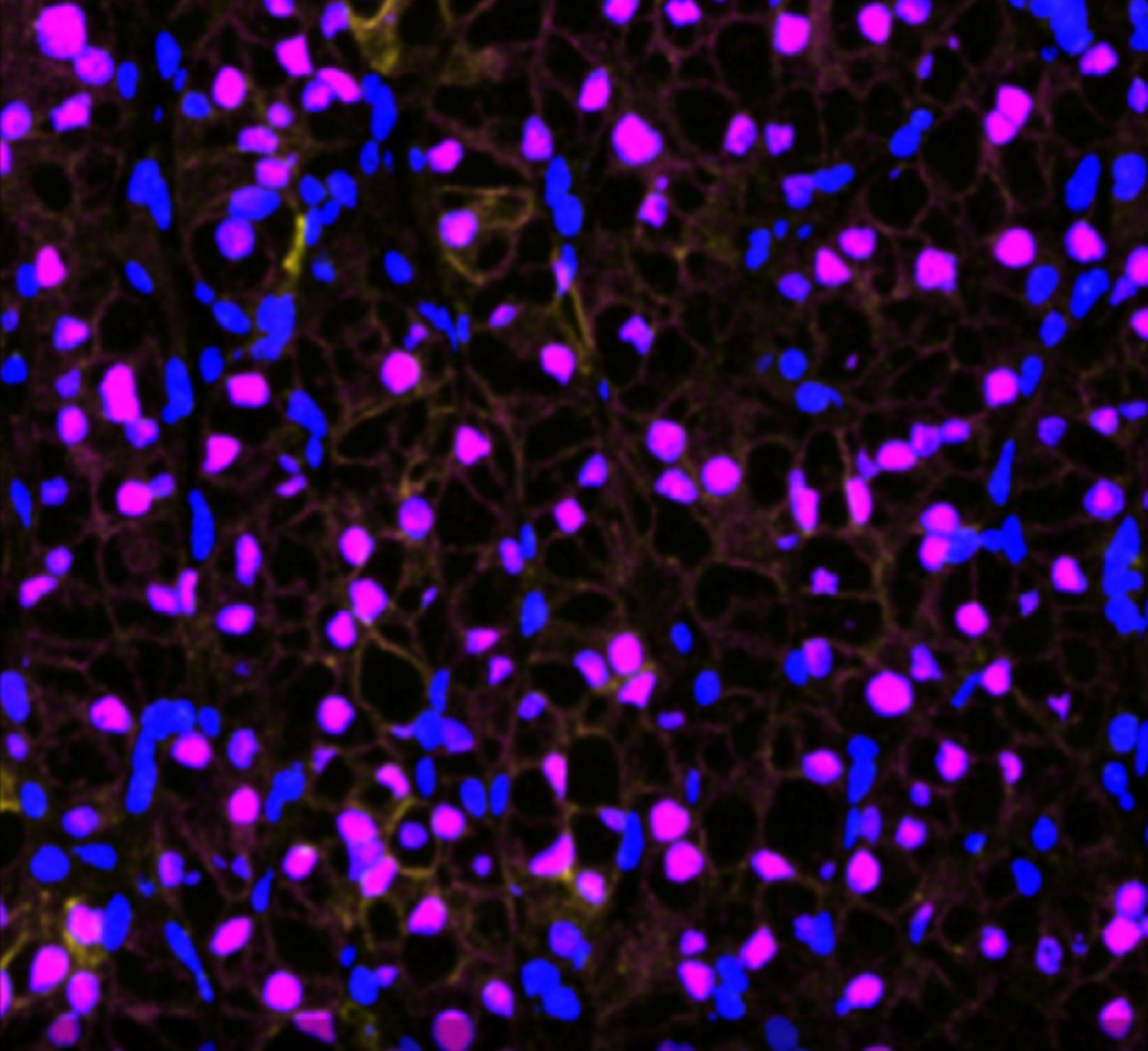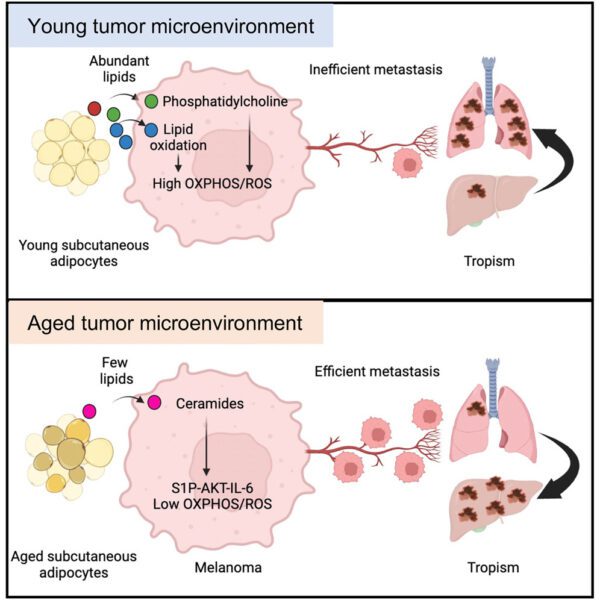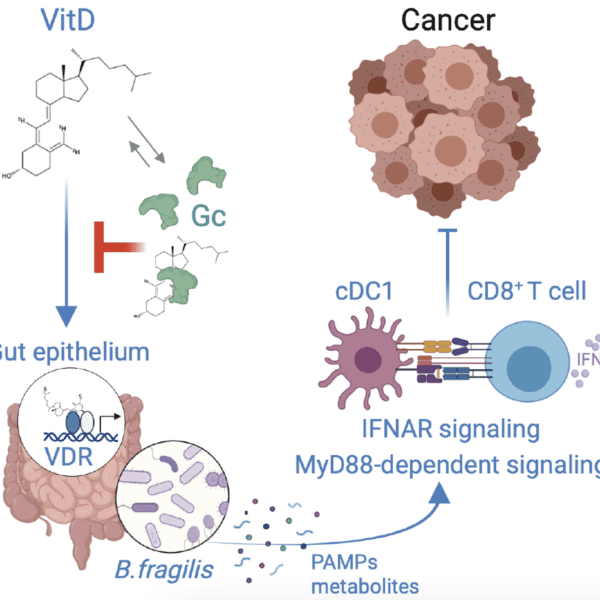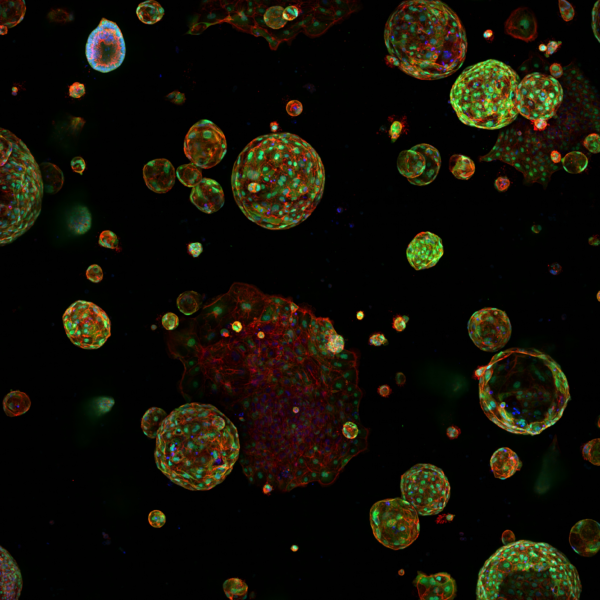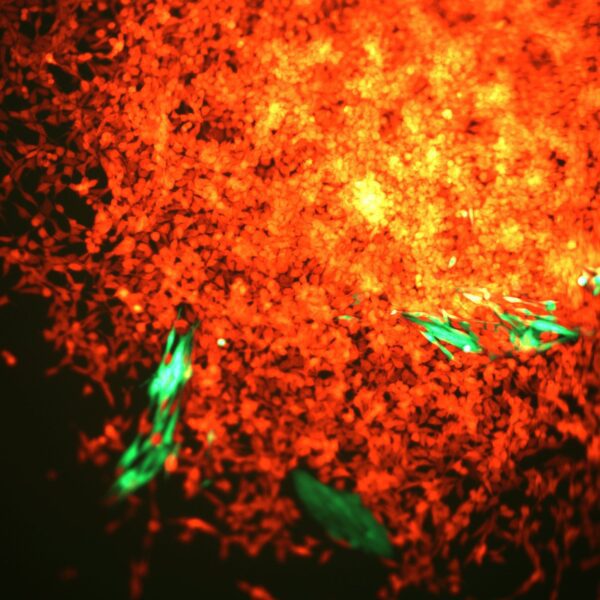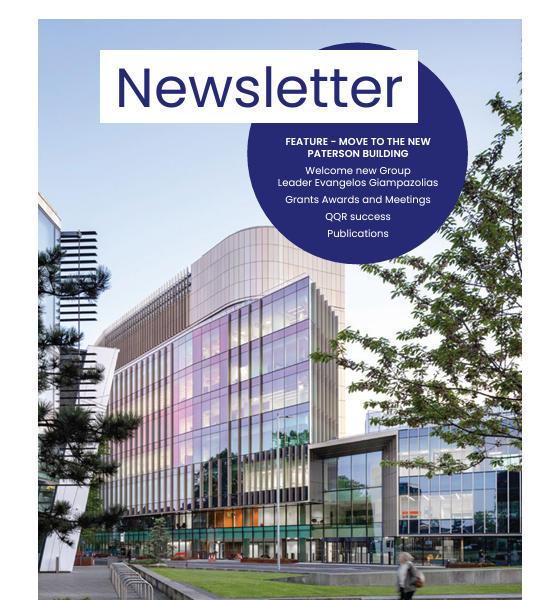Modelling cancer evolution
Overview
Clear cell renal cell carcinoma (ccRCC) progresses through conserved evolutionary trajectories, beginning with the loss of chromosome 3p with additional inactivation of the VHL gene, which occurs in 90% of cases (Mitchell et al. Cell 2018). Subsequent mutations in PBRM1 or BAP1 influence the mode and rate of disease progression ( et al. Cell 2018a).
Interestingly, ccRCCs, despite following different progression paths, tend to converge in their evolution by losing chromosomes 9p and 14q, a key step associated with acquiring metastatic competence (Turajlic et al.,Cell 2018b)
Drawing inspiration from Stephen Jay Gould’s ‘rewinding the tape of life’ thought experiment, this research aims to recreate ccRCC’s evolutionary trajectories using patient-derived organoid models. By applying functional genomic approaches to these models, the study seeks to replicate the tumour’s progression from its cell of origin to its metastatic state. This approach will enable a detailed examination of the molecular and functional changes occurring at each evolutionary step.
The ultimate goal of this research is to develop new therapeutic strategies that specifically target the different stages of ccRCC. By gaining a deeper understanding of the molecular events that drive each phase of the disease, the Turajlić team hopes to design interventions that can disrupt or modify the cancer’s progression, leading to improved outcomes for patients.
